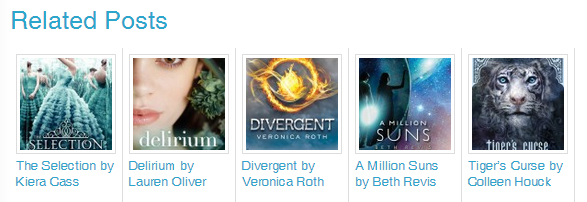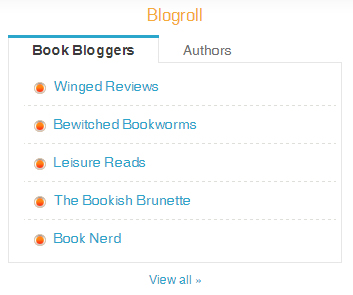What is SEO?
SEO stands for search engine optimization. Essentially, the more ‘optimized’ your website is for search engines, the higher up and more frequently it will appear in search results. Why is this important? Because a fairly decent percentage of your traffic will come from search results, so it’s important to do everything you can to maximize your site’s visibility on search engines!
The goal of most SEO experts is to try to figure out Google’s algorithm for how they rank websites. It’s a very complex, secretive method and we’ll probably never figure it out 100%, but there are always a few basic things you can implement that will help you out with your search results!
1. Use “Pretty” Permalinks
One of the most important factors when determining search engine rankings is the site name itself. If the website’s URL contains keywords that relate to the search, it’s more likely to show up in search results than one that doesn’t. But if your site has “ugly” permalinks, your URLs won’t contain any keywords! Here’s an example:
Let’s say I make a search for “reviews of beautiful disaster by jamie mcguire.” Now here are the two URL options:
Default WordPress Permalinks:
https://www.nosegraze.com/?p=204
Pretty Permalinks:
https://www.nosegraze.com/review-beautiful-disaster-jamie-mcguire
Notice the difference? The default option doesn’t contain any keywords so it doesn’t tell us anything about the webpage! But the second URL contains words instead of numbers, so it gives us a clear description of what the page is about.
How to change your permalinks in WordPress
Changing your permalinks in WordPress from the default to pretty permalinks is easy! Login to your admin area, find Settings on the left-hand side, and select Permalinks. Then switch the permalinks setting to any one that contains the post name. Popular options are “Month and name”, “Post name”, and a custom structure that contains post name and category ( /%category%/%postname%/ ).
2. Use Keywords in Posts and Images
While we’re on the subject of keywords, let’s talk about other places we can use them other than in our URLs! When writing a blog post, keep your keywords in mind. If you’re writing a review of Beautiful Disaster by Jamie McGuire, you might consider keywords such as:

- Book review
- Beautiful Disaster
- Jamie McGuire
- New adult
- Contemporary romance
- Bad boys in fiction
..and so on. Once you have these keywords in mind, use them in your blog post title, post content, image file names, and image alt text. The more often these keywords show up on a page, the more likely you’ll show up in search results when someone Googles “new adult books” or “reviews of beautiful disaster”.
Keywords in images
Keywords in images are just as important as keywords in text! First, it’s important that your images have relevant names. This is very similar to the first point we talked about with webpage URLs. Image file names matter too! Here are two examples:
BAD File Name:
https://www.nosegraze.com/wp-content/uploads/2012/11/image203293.jpg
GOOD File Name:
https://www.nosegraze.com/wp-content/uploads/2012/11/beautiful-disaster-jamie-mcguire.jpg
The first example tells us nothing about the image! Okay, so we know it’s obviously an image because the word “image” is in there, but that’s not enough! The second example is more likely to come up in searches because it contains descriptive keywords.
Using the “alt” attribute in images
There’s one more way that search engines pick up the content in images: through the “alt” attribute. The alt attribute is traditionally there for when an image cannot be displayed for whatever reason. So it’s the alternative text for an image. Here’s what the mark up looks like:
<img src="https://www.nosegraze.com/wp-content/uploads/2012/11/beautiful-disaster-jamie-mcguire.jpg" alt="Beautiful Disaster by Jamie Mcguire" />
The alt attribute should be used as a title or description for the image. Search engines will use this text to determine what the subject of an image is! In addition to helping with SEO, the alt attribute is required for W3C validation. So if you want to ensure that all of your site’s HTML is valid, always use the alt attribute!
3. Utilize Internal Linking
Make sure you always link to different content within your site! For example, say you’re reviewing Beautiful Disaster by Jamie Mcguire and you mention that it was similar in awesomeness to Easy by Tammara Webber. Instead of just mentioning Easy, turn that mention into a link to your review! This way of linking to different content within your own site is called internal linking.
Additionally, it’s important to always use keywords in your links! Here’s a good example and a bad example:
BAD Link:
Beautiful Disaster was just as awesome as (if not better than) Easy by Tammara Webber! You can read my review of that here.
GOOD Link:
Beautiful Disaster was just as awesome as (if not better than) Easy by Tammara Webber!
The problem with the first example is that “here” is not a keyword. It’s not descriptive and it doesn’t tell search engines what you’re linking to. The second example has keywords contained within the link. We have the book title and author, so the link name is relevant to what you’re linking to!
Related Posts
In addition to dropping links inside book reviews and other posts, you should also install some kind of “Related Posts” plugin! A plugin like this will automatically link to similar blog posts at the bottom of each post. This is a great way to link internally to other pages on your site, and it’s a great way to keep your readers on your site for longer!
One example of a great related posts plugin for WordPress is Related Posts Thumbnails.

4. Link With Other Bloggers
Similar to internal linking is back linking. This is where other sites link to you! The best way for book bloggers to do this is to share links! Add each other to your blogrolls and/or do guest posts! But make sure you’re respectful about this. Don’t add 100 blogs to your blogroll and then e-mail every single one asking them to link back to you. Stick to blogs that you actually read regularly. Be genuine and make friends!
Additionally, spamming a link to your blog on other websites will not help your SEO! Google knows spam links when they see them, and those can actually count against you in the rankings! So don’t run around to a million websites copy and pasting the same message to your blog!
5. Use Headings Correctly
By “headings” I’m referring to the HTML heading tags, like so:
<h1>This is a heading 1</h1> <h2>This is a heading 2</h2> <h3>This is a heading 3</h2>
On your blog, the h1 should always be the most important piece of content and there should only be one h1 tag per page. So on your blog homepage, your h1 should be your blog title and then each post title in your blog feed should be h2. But then on the individual post page, the title of your blog post should be h1 (since there’s only one post).
You should then also use the remainder headings in your post (and the rest of your site—like sidebars) when necessary.
Any questions? What do you want to see next?
If you have any questions about this post, please feel free to voice them in the comments and I’ll do my best to answer! If there’s a specific topic about blogging/web design you’d like to see from me in the future, you can also post here or e-mail me! 🙂


Thank you for this post! I started researching SEO very recently, and you’ve put all of the key concepts into one extremely informative post. Time to go back and add alt text to all of my blog images!
I’m so glad this was helpful! 🙂
That’s a lot of useful tips! Thanks a lot, Ashley 🙂
This was awesome. Things like this are common sense to me, but I kinda self-taught myself everything I know about coding and the internet and stuff like that. When I ask other people about things like this, they’re like, “???” and I never know how to explain it. You’re good at explaining it. :3
Plus, it’s good to know I’m not crazy haha.
Thank you. I’m so clueless on how to figure out the SEO for my blog, so this post really helped.
Such great advice. I always use “click here” for my links within a post. I need to stop doing that. I didn’t even know it made a difference. The only thing that sucks is I haven’t found a good “related posts” thingy for blogger. The “linked within” thing I use does not show related posts, it shows random posts.
Unfortunately even WordPress isn’t that much better. Most of the plugins show posts that have at least one tag in common.. but that doesn’t help if 90% of my reviews are tagged “Young Adult” lol. I had to ask my boyfriend to code me a custom plugin that shows posts that have the *most* tags in common (instead of a random 1). HE’S AMAZEBALLS! ♥ ♥ ♥
I’ve read all of this before, but thank for the excellent post nonetheless. I’m gonna start an SEO exercise soon and am sure this will come in handy.
I’ve been trying to find out about SEO stuff and this post was excellent. In fact the bit about permalinks was like a major light bulb going on! I had NO IDEA about that! I’m still trying to work out stuff like “meta” when doing posts in WP – I’m actually not even sure what it is! LOL. Thank you for this. Would love to see more tuts on seo in detail too!
This was actually really helpful. Even before I knew what SEO was, I was pretty good when it came to post, image, and URL titles, but I never really realized they were earning me so many visits until recently. I’ll need to do a better job of utilizing alt tags and internal linking, so thanks for the tips!
So I’m just checking back in your archives for SEO because I was going to ask you about it! Thanks for this post. I always thought it was so hard, but I guess it’s actually quite easy. You just have to make things convenient for everyone.
Say, is there a way to just… you know, give some extra key words? Like for my business page, I’d like to put a location as a key word somewhere in the “back door” for search engines to always connect to me.
No, it has to be somewhere visible on your site.
Search engines used to use hidden keywords called “meta keywords”, but those are no longer used by search engines because people would just fill them with anything and everything, even if the keywords weren’t relevant. Now search engines only use the actual content of the page to pick up keywords.
Meta Keywords! I thought I remembered something like this.
It’s understandable they no longer use them… Hm, okay. Have to find a way to make it work. 😉 Thanks!
I enjoy the information you provided above. I’m always looking for info to clear my understanding regarding SEO; I’m glad I found your site. I’m having a bit trouble understanding the term, “Transitional words”, do you have any suggestions?